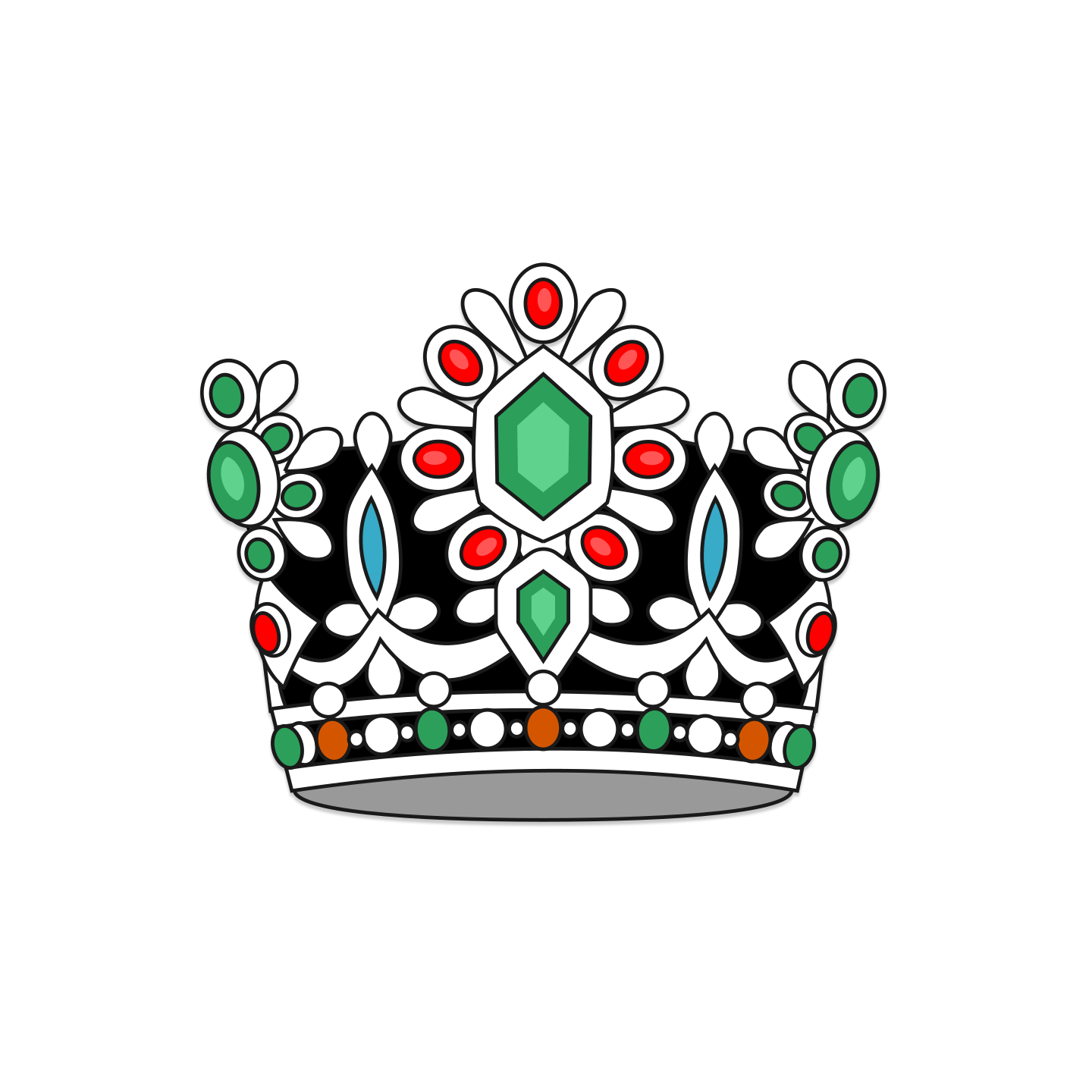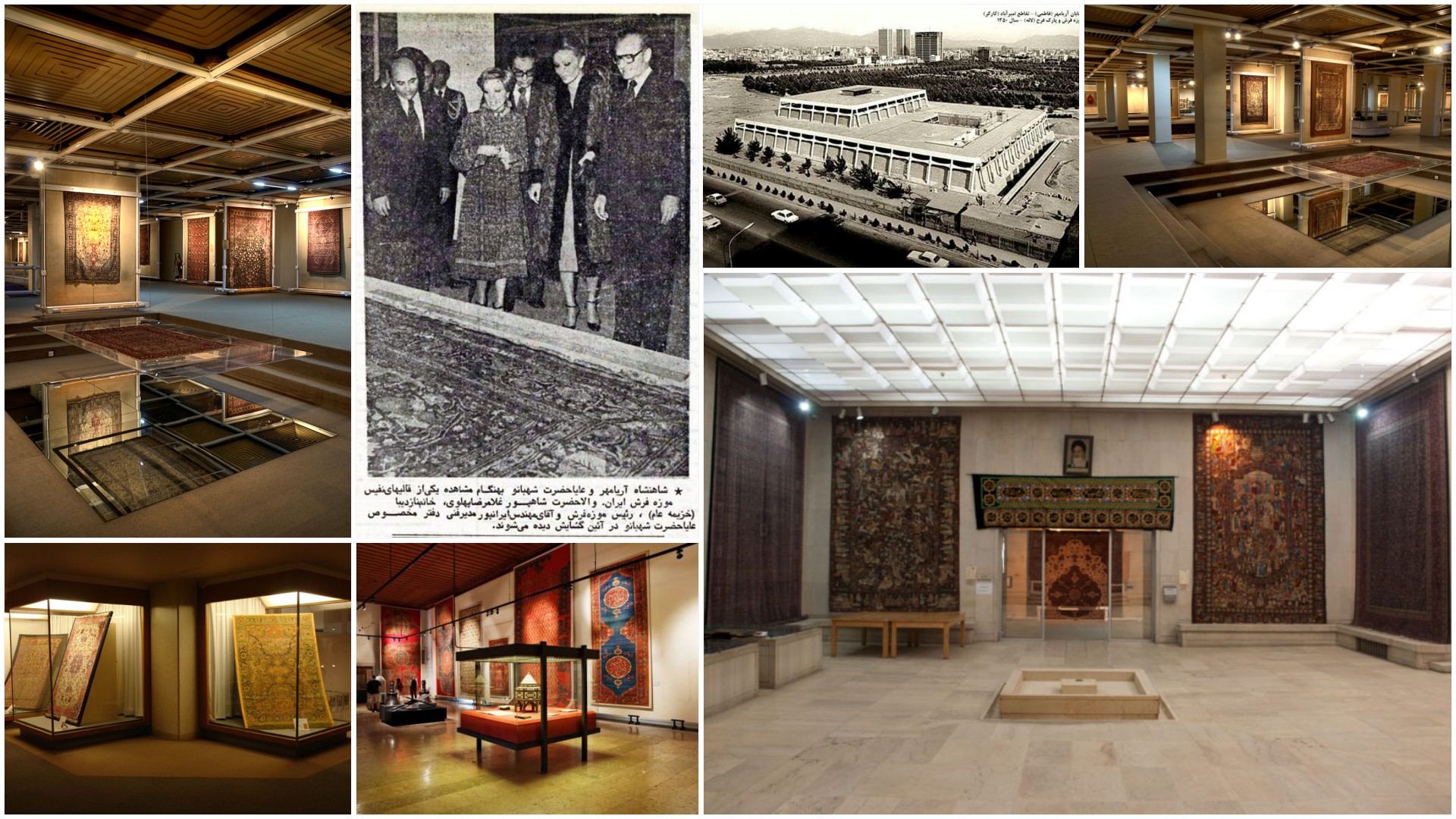The Iran Carpet Museum was inaugurated in the presence of His Imperial Majesty Aryamehr (Mohammad Reza Shah Pahlavi) and Her Imperial Majesty Empress Farah Pahlavi on the afternoon of Saturday, Bahman 22, 2536 Imperial Calendar (February 11, 1978). This museum, established by the will of Her Imperial Majesty the Empress of Iran, is a complete representation of the art and industry of carpet weaving in Iran.
The name of Persian carpets is synonymous with the name of Iran, and original masterpieces have been exhibited in prestigious institutions such as the Poldi Pezzoli Museum in Milan, Victoria and Albert Museum in London, Musée des Arts Décoratifs in Paris, Museum of Applied Arts in Vienna, the Metropolitan Museum of Art in New York, and others. During the opening ceremony, Prince Gholam Reza Pahlavi and his wife accompanied Their Majesties.
Remarks by the Shah of Iran
While touring the Carpet Museum, the Shah stated in an interview:
“Our attention to showcasing the priceless artistic works of Iran, as well as masterpieces from other nations, will significantly contribute to the cultural development of our people. It will help transform Iran into an international center of art and culture in the coming years. This will encourage citizens, as in other countries, to actively participate in the founding and development of museums and to donate both domestic and foreign artworks.”
He added:
“It is gratifying to see that the Kerman Museum has had around 30,000 visitors in a short period since its opening. Similarly, the Museum of Contemporary Art has attracted large audiences, which is encouraging. It shows that when cultural and artistic works are offered to the Iranian people, they make excellent use of them.”
He also addressed the significance of the carpet weaving industry in Iran:
“This art did not just emerge in Iran, but has flourished here like nowhere else. The quality and design of Iranian carpets over the last 50 years are unmatched in any period. Competing with some countries that use machines or cheap labor to produce carpets is challenging — especially if we adhere to the principles of the White Revolution, ensuring that no child under 12 is employed, and that workers operate in healthy conditions.”
“The art of carpet weaving must be preserved by enthusiasts, private benefactors, and with the support of the government, the Ministry of Culture and Art, and the Iran Carpet Company. As Iran’s population grows toward 65 million, with an estimated 12 million homes, demand for quality carpets will increase, which gives hope that excellent carpets will continue to be woven for generations to come.”
Remarks by Empress Farah Pahlavi
The Empress emphasized that the Carpet Museum is not merely a place to display rugs, but also a center for training and research in the art of carpet weaving.
“The opening of this museum is a source of joy for me and for all those who have worked hard for over ten years to establish it. Although financial and administrative issues delayed its completion, during this time many precious carpets were identified and documented.”
Report by Hooshang Nahavandi
Hooshang Nahavandi, Head of the Empress’s Private Office, presented a detailed report:
“The idea of creating the Iran Carpet Museum was proposed by the government and the Plan and Budget Organization during the royal coronation celebrations. The building was completed in 2531 Imperial Calendar (1972) and was then handed over to the Empress’s office for preparation and equipping.”
“Following directives from Their Majesties regarding the acceleration of cultural projects, restoration and expansion of the 28,000-square-meter museum site began in Bahman 2535 (1976). The interior equipment contracts were finalized in Amordad 2536 (August 1977). The museum’s total floor area is 8,000 square meters, and its volume is 33,000 cubic meters. This includes the main exhibition hall (‘White Hall’), administrative sections, technical facilities, and newly constructed storage areas.”
“Over 5,000 square meters are dedicated to exhibitions, with three major halls for showcasing masterpieces of Persian carpet weaving. The rest is allocated for storage, technical operations, a film and lecture hall, a specialized research library, and other museum needs.”
“The museum is equipped with state-of-the-art safety and preservation systems. From Esfand 2536 (February/March 1978), its administration will be transferred to an independent board under the Farah Foundation. The museum is not only a center for the display of Iranian creativity, but also a living hub for research and the preservation of carpet art and industry.”
Post-Ceremony
After the report, members of the museum’s board of directors were introduced to Their Majesties and received their appreciation. The Shah and Empress then toured the museum, viewing the 200 pieces of carpets, rugs, and kilims on display. After their visit, the Shah received directors of Islamic art museums from Germany, the Netherlands, the United States, Britain, France, and India, honoring them for their efforts. He also acknowledged those involved in founding the museum and groups of carpet weavers from various parts of Iran.
It was reported to the Shah that the finest carpets woven in Iran in the last 50 years are housed in this museum. His Majesty ordered a special exhibition of these works to be arranged to better reflect the evolution of carpet weaving in recent decades.
Museum Features
The Iran Carpet Museum, founded on the initiative of the Empress, is a comprehensive showcase of the Iranian carpet industry. Persian carpets are closely associated with Iran’s name, and examples are exhibited globally in prestigious museums. While carpets were previously displayed in various Iranian museums as part of broader artistic collections, there had been no dedicated museum to showcase this national art form.
The goals of the museum include:
-
Studying the historical development of carpet art.
-
Promoting awareness and knowledge of Persian carpet weaving.
-
Acquiring and preserving significant examples from different regions and periods.
-
Organizing national and international exhibitions.
The museum has:
-
A building area of 8,000 square meters, with 3,400 square meters of exhibition space.
-
Two floors: the ground floor displays 150 permanent pieces; the upper floor is used for temporary exhibitions.
-
A comprehensive library with 3,500 volumes in Persian, Arabic, French, English, and German.
-
A bookstore offering museum publications and studies on Persian carpets.
-
A film and lecture hall showing documentaries and presentations on carpet weaving and other handicrafts.
-
A storage facility equipped with climate-controlled, cylindrical containers to preserve delicate rugs from light, humidity, and temperature.
The museum also includes:
-
Landscaped grounds, parking, and public telecommunication services.
-
A bus stop located directly in front of the entrance for visitor access.
The museum’s collection spans from the 9th century AH (15th century AD) to the present, featuring masterworks from Kashan, Kerman, Isfahan, Tabriz, Khorasan, Kurdistan, and other historic weaving centers.
Location: The Iran Carpet Museum is located in Tehran, at the corner of Aryamehr Street and Farah Park.



